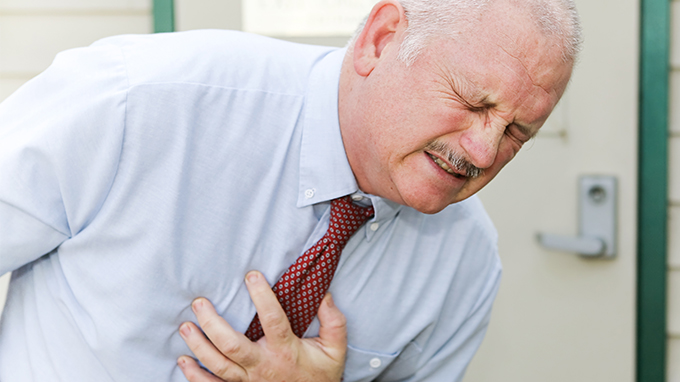What to do if you have a cough after a cold
"Coughing after infection" is a self-limiting disease, which can alleviate on its own, usually without antibiotics.
Features: Occurred after upper respiratory tract infection
Cough is a normal physiological protective reflex of the respiratory tract in the human body, which can remove mucus secretions, harmful substances and pharyngeal and respiratory tract Foreign bodies, etc., but frequent and severe coughing will have a serious impact on the patient''s work, life and social activities. Cough after a cold is the most common cause of subacute cough, which is mostly self-limiting and can relieve itself.
In the respiratory specialty clinic, about 80% of the patients complained of cough. Among them, patients who see a doctor for a cold or a cough after a cold are the most common. Generally, according to the length of the disease, cough can be divided into three categories: acute cough (8 weeks).
According to statistics, 11%~25% of people with a history of upper respiratory tract infection will have cough after infection. In the epidemic season of respiratory tract infections (such as colds), the incidence of cough after infection is as high as 25% to 50%. After infection, the cough is mostly irritated dry cough or a small amount of white mucus sputum, mostly paroxysmal, worse at night, cold air, dust environment, irritating gas, exercise, smoke and other factors can induce or aggravate the cough. In general, cough after infection has the following characteristics:
occurs after upper respiratory tract infection;
cough course lasts more than 3 weeks, but less than 8 weeks;
X-ray chest radiography is normal;
can relieve itself.
Main cause: increased airway sensitivity
The pathogenesis of cough after infection is not yet clear. It is currently believed that infection-induced airway inflammation with transient airway hyperresponsiveness is the main cause of cough after infection. The so-called airway hyperresponsiveness refers to the increased sensitivity of the airway, so that some irritants that do not normally cause cough will also cause the patient to cough. Studies have shown that the duration of airway hyperresponsiveness is related to the repair time of airway epithelium after viral infection. The repair time for airway hyperresponsiveness caused by influenza virus infection is about 5 weeks, and the repair time for airway hyperresponsiveness caused by simple virus infection is about 7 weeks.
Prognosis: multi-function self-relief
Cough after infection is a self-limiting disease, multi-function self-relief, usually without antibiotics. Some patients with obvious cough symptoms can use antitussive drugs, antihistamines, etc. for a short time to relieve the symptoms of discomfort.
At present, most patients and some clinicians do not have enough knowledge about cough after infection. They often treat this cough as bronchitis and use antibiotics for a long time and repeatedly. This is actually a very wrong approach.
The causes of cough are many. First of all, it is necessary to determine whether the cough is secondary to the previous respiratory tract infection, or whether the patient already has a cough. The "cold" is only a cause of aggravating the symptoms of cough. If after a period of empirical treatment, the cough has not resolved, then other causes should be considered, such as cough variant asthma, postnasal drip syndrome, eosinophilic bronchitis, and gastroesophageal reflux disease. When necessary, chest CT, fiberoptic bronchoscopy and other examinations can be performed to avoid missed or misdiagnosed.
Special reminder
Here we must mention cough variant asthma. It is a special type of asthma, and patients often have no obvious symptoms of wheezing, shortness of breath and other symptoms. Irritable dry cough is its only or main clinical manifestation, which is easily confused with cough after infection. Everyone should be vigilant.
Related Articles

- Drinking water can prevent heat stroke
- Actually, the hot weather is not the direct cause of heat stroke. Heat stroke is mostly caused by sweating caused by heat. Under the high temperature in summer, the body sweats tens of tim
- 2020-08-03

- Easily smooth out "head down syndrome"
- People engaged in scientific research, editing, writing and other work are prone to neck and shoulder pain due to long-term bow work, commonly known as "head bow syndrome".
- 2020-08-03

- Dietary principles of patients with hyperlipidemia
- The main dietary principle of patients with hyperlipidemia is to control the continued rise of blood lipids and prevent serious cardiovascular and cerebrovascular accidents. In addition to th
- 2020-08-02

- Dietary coup for winter cough
- The winter in the north is quick to say. When the northwest wind blows down the last autumn leaf, the dry winter begins. The most common health problems in winter are upper respiratory trac
- 2020-08-02

- Infectious diseases of children common in spring
- Spring is a period of frequent confluence of cold and warm air. Due to the poor resistance of children, it is very easy to get sick in cold and hot weather. Parents learn to understand thes
- 2020-08-01

- Understand the secret of "cough reflex"
- Many parents see that their child''s cough will be tense. They are always used to link "cough" and "disease" together. This is because parents do not understand why
- 2020-08-01
